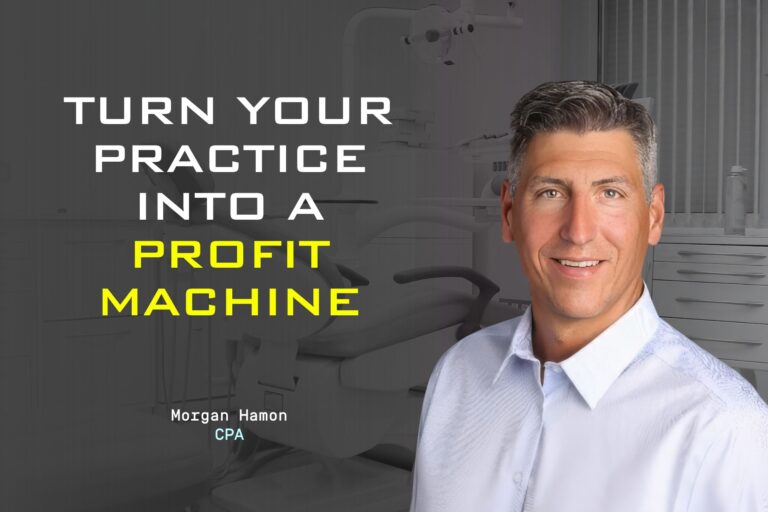How Private Practice Dentists and Orthodontists Can Thrive in an Era of DSO Consolidation and AI Innovation
The dental industry is experiencing unprecedented transformation. As we navigate through 2025, private practice owners face mounting pressure from corporate consolidation, advancing AI technology, and evolving patient expectations. Yet within these challenges lies tremendous opportunity for forward-thinking practitioners who adapt strategically.
Whether you’re a solo practitioner or managing a multi-doctor practice, this comprehensive guide will help you build a resilient, profitable dental practice that thrives in the coming decade.
Download Free Ebook
The Reality of Dental Practice Consolidation: What Every Private Practitioner Must Know
DSO Market Share Explosion
The dental service organization (DSO) landscape has changed dramatically. From just 2% market share in the 1990s, DSOs now control approximately 34% of all dental practices as of 2023. Industry projections suggest this could reach 50% by 2030, meaning nearly half of all dentists may work under corporate structures within the next five years.
This rapid consolidation is driven by several factors:
- Private equity investment in dental groups due to the industry’s recession-resistant nature
- Economies of scale in marketing, purchasing, and technology that DSOs leverage
- Student debt burden pushing new graduates toward corporate employment rather than practice ownership
The Private Practice Advantage: Why Independence Still Wins
Despite consolidation trends, private dental practices possess unique competitive advantages that DSOs struggle to replicate:
Personalized Patient Relationships: Independent practices excel at building deep, lasting relationships with patients and their families. You can remember personal details, follow up individually after treatments, and provide the kind of personalized care that creates lifelong loyalty.
Clinical Autonomy: Private practitioners maintain complete control over treatment planning, materials selection, and patient care protocols. This flexibility allows you to adapt quickly to new techniques and technologies without corporate approval processes.
Community Integration: Local practices can build stronger community ties through sponsorships, referral relationships with other healthcare providers, and word-of-mouth marketing that no corporate marketing budget can replace.
Agility and Innovation: Small practices can pivot quickly, implement new technologies faster, and respond to patient needs without bureaucratic delays.
Leveraging AI in Dental Practice Management: Your Competitive Edge
AI-Powered Patient Communication and Scheduling
Modern dental practices are revolutionizing patient interactions through artificial intelligence:
24/7 Patient Engagement: AI chatbots and phone assistants handle routine inquiries, appointment scheduling, and follow-ups around the clock. This ensures no patient call goes unanswered while freeing your staff for higher-value activities.
Automated Appointment Reminders: AI systems can craft personalized reminder messages, reducing no-shows and improving schedule efficiency. These systems can adapt messaging tone and timing based on patient preferences and history.
Treatment Follow-Up: Automated post-treatment check-ins via text or email help ensure patient satisfaction and catch any issues early, improving both patient outcomes and practice reputation.
Clinical AI Applications: Enhancing Diagnostic Accuracy
FDA-cleared AI diagnostic tools are transforming clinical decision-making:
Radiographic Analysis: AI systems like Overjet and Pearl can automatically detect cavities, measure bone loss, and identify other pathologies on X-rays with remarkable accuracy, often catching subtle issues that might be missed during manual review.
Treatment Planning Support: Machine learning algorithms analyze intraoral scans and cephalometric images to identify orthodontic issues and simulate treatment outcomes, helping patients visualize results before starting treatment.
Quality Assurance: AI serves as a second pair of eyes, providing consistent diagnostic support that enhances clinical confidence and reduces liability risk.
Marketing and Content Creation with AI
Social Media Management: AI tools can generate engaging social media posts, blog articles, and graphic designs tailored to your practice’s voice and brand. This maintains an active online presence without requiring dedicated marketing staff.
SEO-Optimized Content: AI-powered content creation helps develop website copy with proper keywords, improving your practice’s visibility in local search results.
Review Analysis: AI systems can analyze online reviews to identify trends, suggest improvements, and even alert you to potential reputation management issues before they escalate.
Mastering Dental Practice Leadership: From Clinician to CEO
Solving the Staffing Crisis
The dental industry faces a severe staffing shortage, with 72% of practices finding it “extremely challenging” to hire hygienists and 77% struggling to find qualified dental assistants. McKinsey projects a shortfall of over 36,000 dental team members by 2031.
Competitive Recruitment Strategies:
- Offer competitive compensation packages including signing bonuses
- Leverage social media and professional networks for recruitment
- Partner with dental schools and hygiene programs for early talent identification
- Highlight your practice culture and growth opportunities in job postings
Retention Through Development:
- Implement comprehensive onboarding programs for new hires
- Provide ongoing continuing education opportunities
- Create clear career advancement pathways within your practice
- Foster a mentorship culture where experienced staff guide newcomers
Building High-Performance Teams
Cross-Training for Resilience: Ensure multiple team members can handle critical functions like scheduling, insurance verification, and basic clinical assistance. This prevents workflow disruptions when staff members are absent.
Regular Team Communication: Implement daily morning huddles to review the day’s schedule and address any special patient needs. Hold monthly team meetings to discuss goals, celebrate achievements, and address concerns.
Performance Management: Document performance issues early and address them directly through coaching and clear expectations. Don’t delay necessary staffing decisions – removing poor performers protects team morale and practice efficiency.
Financial Optimization: Maximizing Profitability While Controlling Costs
Revenue Stream Diversification
High-Value Service Expansion: Consider adding services like dental implants, clear aligner therapy, or cosmetic dentistry that typically offer higher profit margins than basic preventive care.
Insurance Strategy Reevaluation: Some practices are reducing dependence on restrictive PPO plans by going out-of-network or implementing membership plans that provide predictable revenue while offering patients transparent pricing.
Technology-Enabled Services: Digital dentistry capabilities like same-day crowns or in-house aligner production can create new revenue streams while improving patient convenience.
Operational Efficiency
Overhead Management: Establish target benchmarks for major expense categories (typically staff costs should be 25-30% of collections) and monitor them monthly. Identify and eliminate wasteful spending while maintaining quality standards.
Automation Implementation: Use practice management software to automate routine tasks like insurance verification, appointment reminders, and treatment plan follow-ups, reducing administrative burden on staff.
Productivity Optimization: Implement scheduling systems that minimize gaps and maximize production per hour, such as clustering similar procedures or optimizing hygiene schedules.
Technology Adoption: Staying Ahead of the Curve
Digital Dentistry Integration
Intraoral Scanners: Replace traditional impressions with digital scanning for improved accuracy, patient comfort, and workflow efficiency.
3D Printing and CAD/CAM: In-house production capabilities for night guards, surgical guides, and temporary restorations reduce lab costs and turnaround times.
Cloud-Based Practice Management: Modern software provides real-time business analytics, automated backup, and remote access capabilities essential for practice monitoring and growth.
Patient Experience Technology
Digital Patient Forms: Streamline new patient intake with tablets or online forms that integrate directly with your practice management system.
Treatment Visualization: Use digital photography and treatment simulation software to help patients understand proposed treatments and improve case acceptance rates.
Teledentistry Capabilities: Prepare for the growing demand for virtual consultations and follow-up appointments, particularly for orthodontic monitoring.
Building Exceptional Patient Experiences
Differentiation Strategies
Personalized Service: Maintain detailed patient preference records and use them to customize each visit. Remember children’s favorite flavors, accommodate scheduling preferences, and follow up on important life events.
Comfort Amenities: Consider offering comfort menus with options like blankets, headphones, or aromatherapy to help anxious patients feel more at ease.
Flexible Financing: Provide multiple payment options including in-house financing plans that make treatment more accessible while maintaining cash flow.
Community Engagement
Local Partnerships: Build relationships with pediatricians, family physicians, and other healthcare providers for mutual referrals.
Educational Outreach: Offer presentations at schools, community centers, or local businesses to establish your practice as the trusted local expert.
Online Reputation Management: Actively encourage satisfied patients to leave reviews and respond professionally to all feedback, demonstrating your commitment to patient satisfaction.
Strategic Planning for Long-Term Success
Business Operating Systems
Consider implementing structured management frameworks like the Entrepreneurial Operating System (EOS) to bring accountability and organization to your practice operations. These systems provide:
- Clear goal-setting and tracking mechanisms
- Regular team meetings with defined agendas
- Problem-solving frameworks that ensure issues get resolved
- Communication structures that keep everyone aligned
Vision and Values Development
Practice Vision: Develop a clear statement of where your practice is headed (e.g., “To be the most trusted orthodontic provider in our community, known for exceptional patient care and innovative treatment options”).
Core Values: Define 3-5 fundamental principles that guide hiring decisions and daily operations (e.g., “patient-first mindset,” “continuous improvement,” “teamwork and trust”).
SMART Goals: Set specific, measurable objectives for production, patient satisfaction, team development, and business growth.
Process Documentation and Standardization
Operations Manual: Document key procedures like new patient intake, treatment planning protocols, and billing processes to ensure consistency and facilitate training.
Quality Checklists: Implement checklists for critical processes like sterilization, equipment maintenance, and end-of-day procedures to maintain high standards.
Workflow Optimization: Regularly review and refine processes to eliminate bottlenecks and improve efficiency.
Preparing for Future Challenges and Opportunities
Succession Planning
Associate Development: Consider bringing in younger dentists as associates with potential partnership tracks to ensure practice continuity.
Exit Strategy Planning: Whether you plan to sell to a DSO, merge with other practices, or transition to family members, start planning early to maximize your options.
Value Building: Focus on building systems and processes that make your practice attractive to potential buyers or partners.
Staying Adaptable
Market Monitoring: Keep informed about industry trends, new technologies, and changing patient expectations to adapt your strategy accordingly.
Network Building: Join professional organizations, mastermind groups, and local business associations to learn from peers and stay current on best practices.
Continuous Learning: Invest in your own leadership development through books, workshops, and coaching to grow your business management skills alongside your clinical expertise.
Conclusion: Your Roadmap to Thriving in the New Dental Landscape
The future of private dental practice remains bright for those willing to evolve strategically. While DSO consolidation and technological disruption present challenges, they also create opportunities for differentiation and growth.
Success in the coming decade will require:
- Strategic adoption of AI and digital technologies to enhance efficiency and patient experience
- Strong leadership skills to attract, develop, and retain top talent
- Financial discipline combined with smart growth investments
- Unwavering focus on patient relationships and community engagement
- Systematic approach to business management and strategic planning
The practices that will thrive are those that begin implementing these strategies today. Start by assessing your current position in each area outlined above, identify your biggest gaps, and create an action plan for improvement.
Remember, the goal isn’t just to survive the changing landscape – it’s to position your practice to thrive while maintaining the clinical autonomy and personal fulfillment that drew you to private practice in the first place.
Your patients, your team, and your future self will thank you for taking these proactive steps toward building a future-proof dental practice that stands the test of time.
Ready to transform your dental practice for long-term success? Schedule your free strategy call today to learn how our specialized marketing and business development services can help you implement these strategies and build a thriving practice that competes successfully in any market condition.




